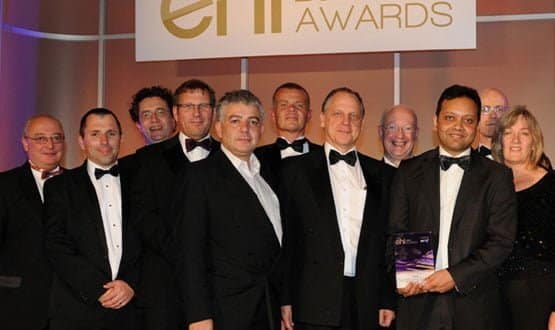When hospital care was handled by small teams who knew one another and their patients well, handovers were relatively simple and informal.
As the shape and complexity of healthcare has changed, however, there has been a growing need for more effective handover arrangements.
The challenge has been made all the more difficult by the European Working Time Directive, because its regulations have meant an increase in shift work for junior doctors and major changes to the way that hospitals are run at night.
The Royal College of Physicians and National Patient Safety Agency have both highlighted good clinical handover as a key clinical priority.
People, process and technology
Yet studies show that clinical information is poorly retained if verbal or handwritten information is transferred across multiple shifts, according to Richard Salter, head of consulting at Ascribe Consulting.
“Poor clinical handover can obviously compromise patient safety and quality of care,” he says. “Good handover is about people, process and technology working together; but no matter how excellent the people, a process that relies on hastily communicated notes presents a clinical weakness.
“Manual and paper-based processes hark back to practices of the last century, when healthcare involved less multi-disciplinary input and far fewer data points and care pathways. Nowadays, those systems are creaking at the seams, prone to errors and time-consuming for busy clinicians.”
A structured approach
Little wonder then that eHandover, a clinical handover system developed by Barking, Havering and Redbridge University Hospitals NHS Trust and its IT consulting partner Ascribe, has caught the eye of several acute trusts since its launch last June.
The solution is based on Microsoft SharePoint tools available in most trusts and familiar to clinicians, which means they can pick it up in a matter of minutes.
“The joint-development project with Ascribe was less about IT and more about getting the right information into the right hands to mitigate one of the biggest risks facing hospitals, particularly at weekends,” says Dr Aklak Chaudhury, clinical director of acute and internal medicine at the trust.
“Individuals typically work in disparate ways that challenge their ability to communicate regularly and reduce their ability to perform effectively as a team.”
Dr Chaudhury recognised that any practical solution needed to be based upon a systematic and structured handover process – one that would:
- Identify critical patients – with handover care packages documented, actions recorded, and each action clearly allocated to a specific doctor.
- Manage patient care across the ‘shift gap’ – for instance, from the Friday day shift to the Sunday evening shift, where traditional manual handovers experience high rates of miscommunication and breakdown.
- Centralise and make patient data accessible, enabling informed decisions and pre-planning of care.
Plugging the ‘shift gap’
Dr Chaudhury says the ‘shift gap’ is an issue for all UK acute hospital trusts. "Clinical risks associated with patient handover, especially at the weekend, should be at the forefront of everyone’s mind,” he says.
“Using a transferable handover methodology, coupled with an intuitive electronic tool, we’re experiencing high usage, with more than nine out of 10 tasks recorded as completed on the system over the largest shift gaps.
“By managing shift gaps in this way, eHandover greatly reduces communication failure and patient risk at night and weekends.”
As a result, he says patients are more likely to receive planned interventions, thereby making care more efficient and safer. Moreover, by increasing the effectiveness of multi-disciplinary communication over the long-term, he says more time can be unlocked in the doctor’s working day; time that can be used to better effect.
“eHandover makes key patient information more accessible, enabling informed decisions and better planning of care,” says Dr Chaudhury. “It recognises the daily workflows of junior doctors and provides the functionality to complete handover tasks safely, efficiently and without duplication.”
He says other benefits include:
- Dynamic, real-time handover logs – enabling a new handover request to be created at any point over 24 hours – for instance, 50% of the handover tasks for completion on Sunday can be produced by out-of-hours teams on Friday night and during Saturday.
- Near immediate handover functionality from time of admission – 17% of handover logs to out-of-hours clinicians occur within the first 12 hours of admission to hospital.
- Traffic light task allocation, enabling clinicians to view real-time task status – tasks are given a clinical priority setting and a time slot, enabling triage and review of sicker patients.
- Central storage of lists of all in-patient consultants, on-call admissions and handover – reducing the risk of confidential data loss.
- An electronic audit trail of handover tasks, which allows full clinical governance protection for users and patients
A replicable solution
Dr Chaudhury claims eHandover is sufficiently versatile to be used by a single speciality, multiple specialities or a hospital at night group.
“I believe the solution will become the new ‘gold standard’ for hospital clinical handover. It is cheap to set up, doesn’t require PDAs or wireless connectivity, and the learning curve is quick, with minimal training,” he says.
“We’ve already been approached by NHS London and the London Deanery to evaluate the feasibility of using eHandover right across London. Our partner Ascribe certainly has the necessary experience in the deployment methodology to safely and rapidly implement the solution for other trusts.”
Meanwhile, Dr Chaudhury says eHandover’s strongest supporters are the users themselves: “In just over a year we’ve recorded more than 20,000 handover logs and more than 330 doctors have used the system, which is a testament to its ease of use.
“eHandover recognises the daily workflows that junior doctors deal with, and provides them with the functionality to complete their handover tasks safely, efficiently and without duplication.
"I therefore believe it has the potential to standardise clinical handover across the NHS," he concludes.

To enter an award category, reserve a table, or for more information on the EHI Awards 2012 in association with BT please visit the Awards section of the website.

